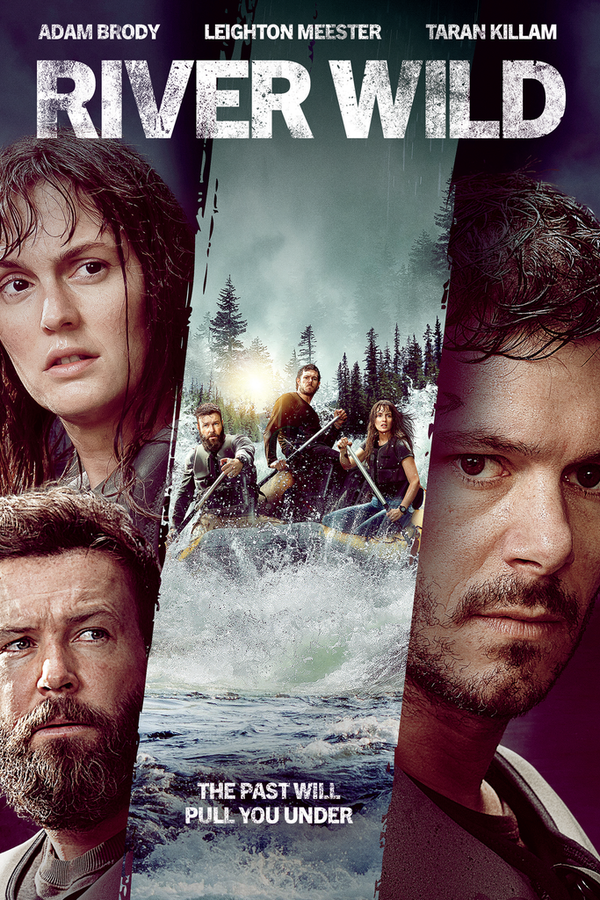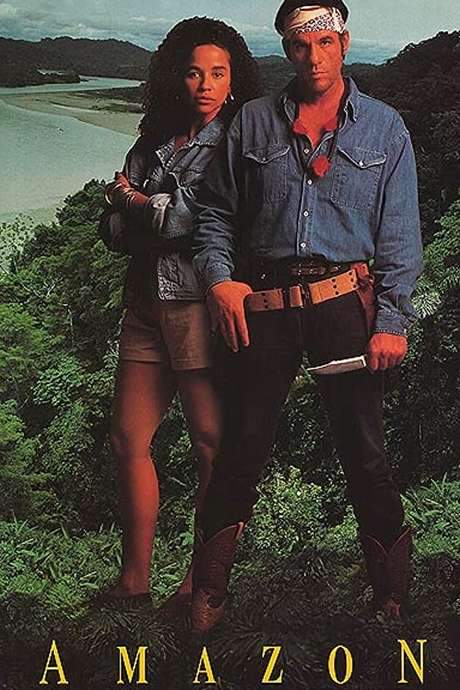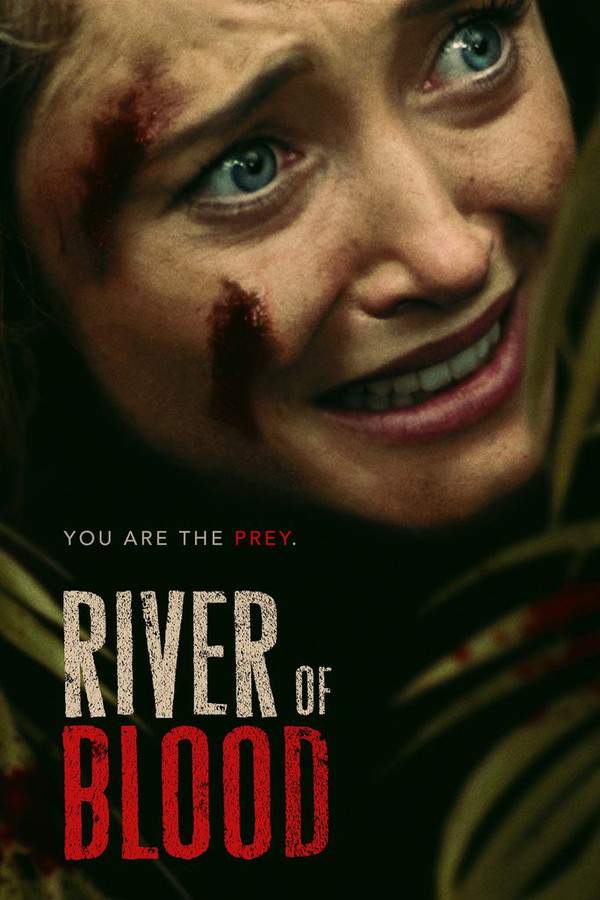Warning: spoilers below!
Haven’t seen Where the River Runs Black yet? This summary contains major spoilers. Bookmark the page, watch the movie, and come back for the full breakdown. If you're ready, scroll on and relive the story!
Where the River Runs Black (1986) – Full Plot Summary & Ending Explained
Read the complete plot breakdown of Where the River Runs Black (1986), including all key story events, major twists, and the ending explained in detail. Discover what really happened—and what it all means.
Brazil, 1976, is a story set in the lush yet perilous heart of the Amazon, where faith, ambition, and myth collide in a landscape that tests every human conviction. Father Mahoney, Peter Horton, arrives as a missionary with a stubborn belief that medicine and development can save a people long left to hardship. He clashes with his superior, Father O’Reilly, Charles Durning, who urges him to abandon grand plans and instead devote his energy to saving souls. The tension between these two visions sets the stage for a journey that will blur the lines between salvation and temptation.
When Mahoney ventures alone into the black, serpentine waters by canoe, he encounters the legendary Eagle Woman, a seductive spirit said to dwell in the river and to take the form of a river dolphin. The encounter is charged with desire and danger, and during this moment of intimacy he gives the woman the crucifix from around his neck. The meeting leaves a mark on him far beyond earthly boundaries, and soon after his return to the mission, tragedy strikes: he is killed by an anaconda, never knowing that the woman he left behind is now carrying a child. The child is Lazaro, a boy who will grow up in the jungle, in an idyll of river and dolphin, far from the structures of the mission.
Lazaro, Alessandro Rabelo, is raised by his mother in the forest, where he discovers a world of wonder—swimming with the river dolphins and moving with a natural ease through a landscape that feels like a living, breathing guardian. His early years are solitary, punctuated by moments of danger and beauty, and his mother’s life is cut short when hunters, led by Orlando Santos, arrive in the jungle and kill her in a struggle. The moment is witnessed from the trees by the child, who is then pulled from the river by the same river dolphins that will become his lifelong companions. They bring him safely to shore, and at the age of six he learns to survive on his own in the wild, an origin story that becomes central to the tale’s mythic thread.
News of a feral child travels to the towns along the river, and by the time Lazaro is ten, he is captured and taken to a local orphanage. There, Father O’Reilly, Charles Durning, recognizes the crucifix on the boy and understands that Lazaro is Mahoney’s child. He baptizes him and names him Lazaro, inviting him into a simple, if curious, Catholic world. Lazaro finds a friend in an older boy known as Segundo, Ajay Naidu, who helps him learn language and social norms. The orphanage, overseen by kindly nuns and supported by a benefactor seen as a potential governor, becomes a stage on which Lazaro’s dual inheritance—Jungle and civilization—will clash in the most human way.
As Lazaro grows, so does his longing for the life he left behind. He runs away with Segundo, driven by a desire for justice and vengeance against the man who killed his mother—Orlando Santos, the campaign financier who has risen to prominence in a provincial power struggle. Santos is a charismatic, dangerous figure who uses his influence to manipulate events, and Lazaro’s return to the world of men is marked by a tense pursuit through the forest and the city. Santos himself is linked to a hive of other characters, including his allies and the political machinery that props up his ambitions (a circle that includes people like Luis and others involved in the campaign, such as those portrayed by François Thijm and others in the ensemble).
In a moment of desperate confrontation, Lazaro confronts Santos at a gathering. Armed with a sharpened stake, he lunges at Santos in front of attendees, but the moment spirals into a violent, chaotic chase. Although Lazaro escapes, Segundo is captured by Santos’s security and becomes a pawn in a larger game. The pursuit forces Lazaro to move between the jungle’s embrace and the human world’s coercive reach, as Santos uses his influence to corner the boy and force a reckoning.
Father O’Reilly, meanwhile, pursues the truth by traveling up the Amazon, guided by a growing sense that Lazaro may return to the forest he once called home. The two paths—one toward mercy and the other toward retribution—converge on a riverbank where the old life and the new fate collide. Lazaro returns to the riverine world that raised him, and the forest finds him again as he walks a familiar path toward a place where river dolphins swim in the same river that carried him as a child. Santos closes in, grabbing Lazaro from behind and dragging him toward the water in a bid to finish a debt that cannot be paid in the human world alone.
In a climactic moment, the river dolphins attack Santos, striking him with their snouts and driving him to drown. The scene is charged with moral ambiguity: Father O’Reilly arrives as Santos falters, his instinct to save warring with a conviction that the man’s violent acts have earned their own consequence. He chooses to let the moment play out, leaving Santos to drown, and he finally confronts the possibility that forgiveness might require letting go of vengeance. The aftermath is quiet but resonant: O’Reilly reunites with Lazaro, yet he leaves the boy to be reared by the forest, a decision that suggests the jungle remains a place of refuge and risk, a place where a child can grow into a legend.
As the film completes its arc, Lazaro becomes a figure of local lore, a child of river and forest who may still be seen playing with the dolphins and perhaps even transforming into one of them. The narrator’s voice—Father O’Reilly’s confession and quest for forgiveness—frames the entire journey. The opening and closing cadence of the film anchors the myth in moral reflection, presenting a story in which a healing impulse collides with a brutal history, and where the boundaries between civilization and the wild are tenderly, unflinchingly tested.
Throughout, the film remains anchored in a cast of distinct figures who guide Lazaro from childhood into a morally fraught adulthood: Conchata Ferrell as Mother Marta offers care within the orphanage, Dana Delany as Sister Ana lends spiritual counsel, and Peter Horton as Father Mahoney represents the doomed impulse to heal at any cost. The cast around Lazaro—Castulo Guerra as Orlando Santos, Chico Diaz as Raimundo, Ariel Coelho as Francisco, Paulo Sergio Oliveira as Jose, François Thijm as Luis, and Geraldo Salles as the Priest in Confessional—paints a vivid, morally complex world in which faith, power, memory, and the wild coexist and collide.
Last Updated: October 09, 2025 at 14:27
Unlock the Full Story of Where the River Runs Black
Don't stop at just watching — explore Where the River Runs Black in full detail. From the complete plot summary and scene-by-scene timeline to character breakdowns, thematic analysis, and a deep dive into the ending — every page helps you truly understand what Where the River Runs Black is all about. Plus, discover what's next after the movie.
Where the River Runs Black Timeline
Track the full timeline of Where the River Runs Black with every major event arranged chronologically. Perfect for decoding non-linear storytelling, flashbacks, or parallel narratives with a clear scene-by-scene breakdown.

Similar Movies to Where the River Runs Black
Discover movies like Where the River Runs Black that share similar genres, themes, and storytelling elements. Whether you’re drawn to the atmosphere, character arcs, or plot structure, these curated recommendations will help you explore more films you’ll love.
Explore More About Movie Where the River Runs Black
Where the River Runs Black (1986) Scene-by-Scene Movie Timeline
Where the River Runs Black (1986) Movie Characters, Themes & Settings
Where the River Runs Black (1986) Spoiler-Free Summary & Key Flow
Movies Like Where the River Runs Black – Similar Titles You’ll Enjoy
The River Wild (1994) Story Summary & Characters
Jungle (2017) Full Summary & Key Details
River Wild (2023) Complete Plot Breakdown
Tainá: An Amazon Adventure (2000) Complete Plot Breakdown
Amazon (1990) Plot Summary & Ending Explained
The Emerald Forest (1985) Ending Explained & Film Insights
River of Blood (2025) Story Summary & Characters
Jungle Run (2021) Ending Explained & Film Insights
Forbidden Jungle (1950) Complete Plot Breakdown
Tarzan and the Great River (1967) Ending Explained & Film Insights
Man from Deep River (1972) Detailed Story Recap
The End of the River (1947) Story Summary & Characters
No Stars in the Jungle (1967) Detailed Story Recap
Jungle Boy (1998) Story Summary & Characters
Boy of Two Worlds (1959) Complete Plot Breakdown


















